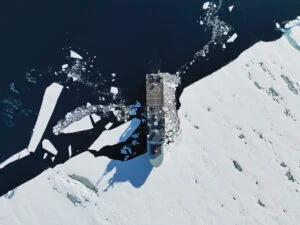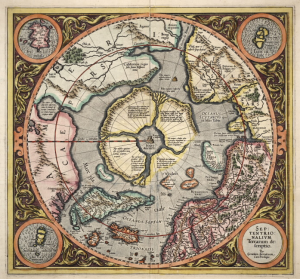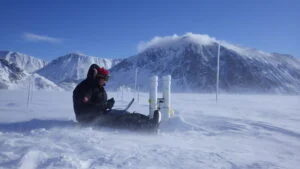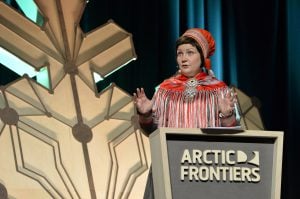
People & Culture
On thin ice: Who “owns” the Arctic?
As the climate heats up, so do talks over land ownership in the Arctic. What does Canadian Arctic Sovereignty look like as the ice melts?
- 4353 words
- 18 minutes
This article is over 5 years old and may contain outdated information.
People & Culture

Canada’s Arctic is in the midst of unprecedented ecological change and industrial interest that will have a direct impact on its future and that of all its inhabitants, according to Canada’s Arctic Marine Atlas, a new resource created by conservation group Oceans North in partnership with World Wildlife Fund Canada and Ducks Unlimited Canada. The 122-page atlas, published in English, French and Inuktut, examines the relationship between northern species and human activity, covering topics such as sea ice change, Inuit land claims and place names, industrial and commercial shipping and wildlife habitat ranges.
“We realized there was not a single resource that existed that told the whole story about what we know about Arctic birds, fish, marine mammals and, of course, the people in the North,” says Louie Porta, vice-president of Oceans North. “We knew that individually these stories were compelling, but we were curious about how it would look to bring them together in one big mosaic.”
The map shown here, created by Canadian Geographic using data from the atlas, overlays marine mammal habitat concentrations with shipping routes, commercial fisheries and areas of oil and gas potential throughout the North. The species identified include narwhals, bowhead whales, belugas, polar bears, walruses and ringed seals — all animals that experience detrimental effects from noise pollution, contaminant spills and habitat alteration caused by development.
“We wanted to present the existing footprint of industrial activity and marine management,” says Porta. While the goal of the atlas is simply to present a picture of today’s Arctic to the public rather than analyze implications and make recommendations for the future, Porta believes it can also be an important jumping-off point for decision-makers and scientific endeavours. Ultimately, he says, he hopes the atlas will lead to meaningful changes in Arctic policy.
Mouse over or tap on the map below to learn more about how wildlife species stand to be affected by increased human activity in the Arctic.

Are you passionate about Canadian geography?
You can support Canadian Geographic in 3 ways:

People & Culture
As the climate heats up, so do talks over land ownership in the Arctic. What does Canadian Arctic Sovereignty look like as the ice melts?

People & Culture
In this essay, noted geologist and geophysicist Fred Roots explores the significance of the symbolic point at the top of the world. He submitted it to Canadian Geographic just before his death in October 2016 at age 93.

Science & Tech
Celebrating Canadian Innovation Week 2023 by spotlighting the people and organizations designing a better future

Environment
The uncertainty and change that's currently disrupting the region dominated the annual meeting's agenda